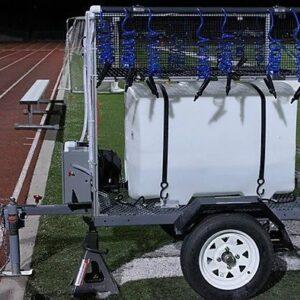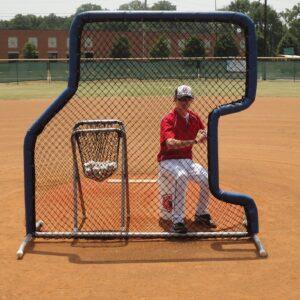For many youth athletes, the start of a new sports season may be right around the corner. Many of these athletes will experience aches, pain, and injuries during the first few weeks of the season. With some helpful hints and preventative measures, an athlete can minimize the chance of soreness and injuries during the first crucial weeks of a season.
How important is physical conditioning for a young athlete prior to the start of a season?
Physical conditioning is probably one of the most important things an athlete should do prior to the start of the season in order to decrease the chances of an injury, particularly the soreness that occurs during the first few days of practice. The type of conditioning activity that an athlete can perform should be similar in intensity to the sport he or she participates in. Examples of this can be running sprints or plays for football or mixing running sprints and long distances for soccer or basketball.
Is warming up and stretching necessary for youth athletes prior to practice and games?
Yes, before any vigorous activity athletes should spend at least five to ten minutes performing general warm-up followed by stretching exercises. Warm-up activities can consist of running in place or running laps at a mild to moderate pace. The flexibility exercises should stretch all of the muscle groups that are used in the sport in which the athlete participates. Each of the stretches should be done slowly and held in the stretched position for a minimum of 15 seconds. Incorporating dynamic movements, such as laps push ups, can also enhance the warm-up routine by engaging multiple muscle groups and improving overall coordination. Additionally, a comprehensive warm-up not only prepares the body physically but also helps mentally prime athletes for the upcoming practice or game. This preparation can contribute to better performance and a reduced risk of injury during activities.
For young athletes, how important is it for them to play using the proper technique for their sport?
The importance of proper techniques cannot be overemphasized. The proper technique starts with the coach. It is the coach’s responsibility to make sure that safe techniques are taught as well as performed correctly by the athletes.
How important is it that athletes use equipment that is made for their specific age group?
If an athlete uses equipment that does not properly fit, the chance of suffering an injury increases. This equipment also needs to be in good condition. Athletic equipment, such as helmets, pads or shin guards, and even mouthpieces, should be fitted by a knowledgeable person, such as the coach, salesperson, or medical professional. Parents should be actively involved in this process also.
Even footwear must fit properly. Athletic shoes should fit comfortably at the time they are bought. An athlete should not wear brand new footwear to practice. The shoes should be worn for several days at some point prior to the start of the season in order to prevent the likelihood of blisters.
What about sports that are played on hot and humid days?
When practicing on hot and humid days, the intensity of the activity should be decreased. A better idea would be to schedule practices during cooler times of the day, such as early morning or evening. Athletes should wear loose-fitting, bright-colored clothing made of cotton or other types of fabric that breathe and allow the sweat to evaporate from the athlete’s skin and permit heat to dissipate from the athlete. Ensure that adequate fluids are consumed before, during, and after the activity.
Michael Krackow is the Director and Associate Professor of the Athletic Training program at the College of Health Sciences in Roanoke, Virginia. Michael possesses a B.S. from Hofstra University, a Masters in Education from the University of Cincinnati, and a Doctorate from Virginia Tech. He is also a certified athletic trainer and strength and conditioning specialist.
-
100 Gallon Rechargeable Football Hydration Station | Made In USA & New Low Price!$5,690.00
-
Product on saleOutdoor Aluminum Sports Scorers Table In Team ColorsOriginal price was: $1,259.99.$1,150.00Current price is: $1,150.00.







